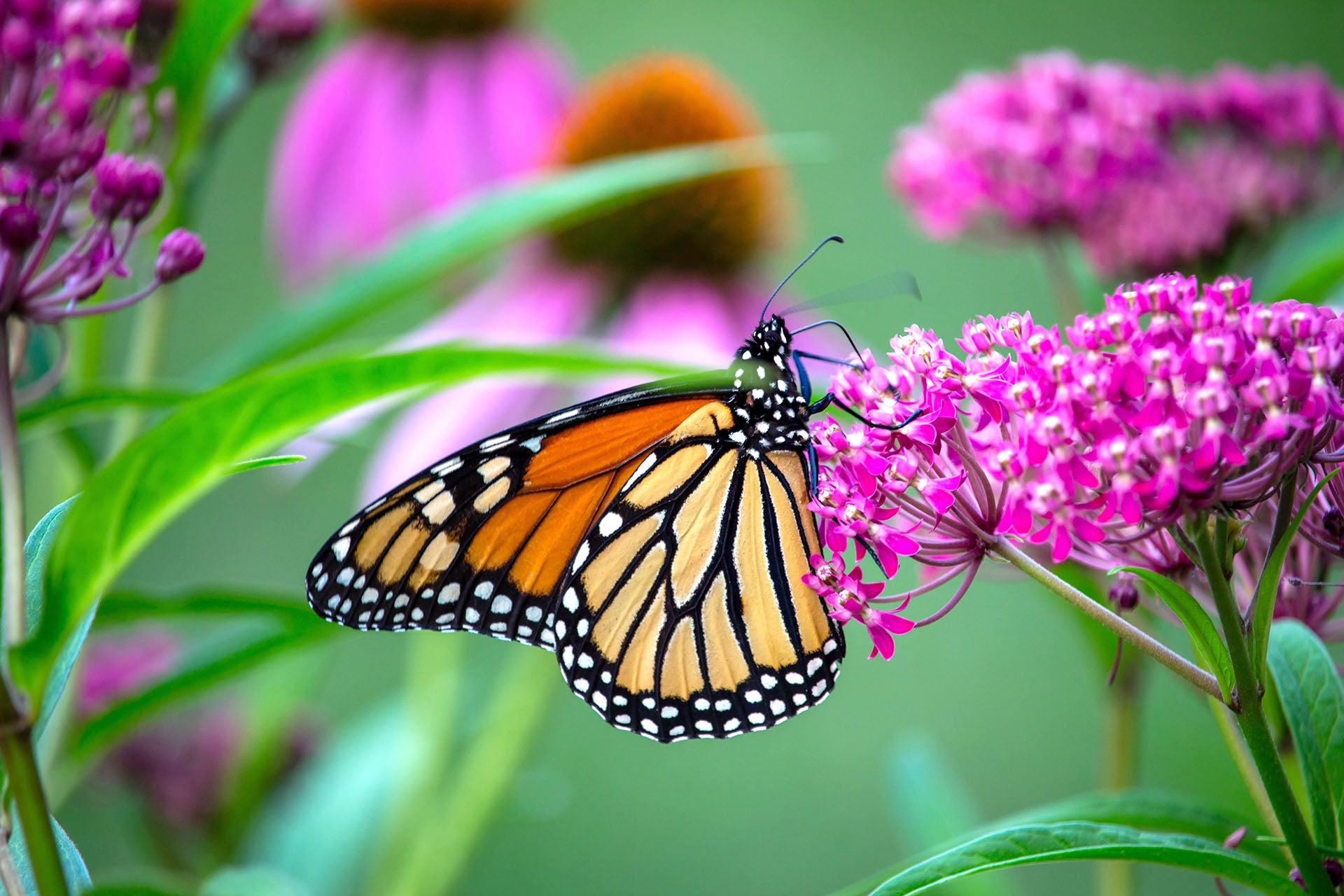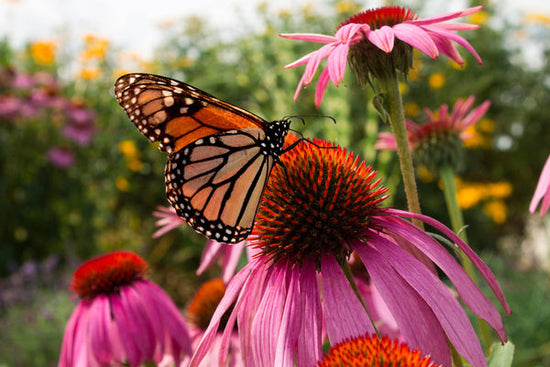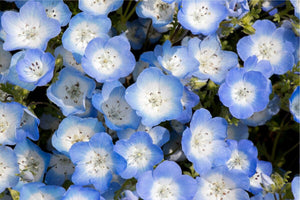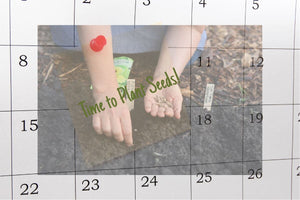How to Grow Milkweed for Monarchs: How Your Garden Can Help
Pollinator gardeningMilkweed offers more than just vibrant blooms for your garden it’s a critical plant for the survival of monarch butterflies. Gardeners can support the monarch population by providing essential habitat and nourishment during their migration. Growing milkweed in your garden is easy to do and will increase your garden's biodiversity and help in monarch conservation efforts.

Milkweed Seed Germination Tips
Growing milkweed from seed is easy, but a few tips can help you get the most out of each package of seed.
- Milkweed is slow to germinate, so cold-stratifying the seeds will significantly improve success. Simply sprinkle seeds onto a moist paper towel, fold the towel, and insert it into a plastic bag. Place the bag in a refrigerator for 2-4 weeks.
- Sow seeds indoors in a warm and bright location. Milkweed seeds need light to germinate, so barely cover the seeds with no more than ¼” soil.
- Keep your seeds moist until they sprout, but do not overwater.
- When all danger of frost is past, harden off your milkweed seedlings and transplant them outside.
Caring for Milkweed Plants
- Full sun is important for growing milkweed plants. Make sure they get direct light for at least 6 hours a day.
- A group of milkweed plants is more visible to migrating butterflies. Plan for at least 6 milkweed plants in a group, spaced 18 to 24 inches apart.
- Milkweed plants have a long taproot. Young seedlings will need regular watering. Established milkweed plants only need watering in drought conditions.
- Common milkweed (Asclepias syriaca) can spread, so it is best planted in areas where it won't overtake other plants.
- Swamp milkweed (Asclepias incarnata) and butterfly weed (Asclepias tuberosa) are two milkweed species that integrate well in perennial flower beds.
- To keep milkweed from self-seeding, pick seed pods before they are fully developed. Or leave them to grow and drop seeds if you want your milkweed plants to keep spreading.

Why Monarchs Need Milkweed Plants
Monarch butterfly populations are in trouble. They’ve been declining for years because milkweed plants and wildflowers have been eradicated as land management practices have changed. Areas that used to be wild and teeming with milkweed plants are now becoming urban and suburban developments or are being cleared for agricultural use. Widespread use of pesticides and herbicides also threatens these vibrant orange butterflies.
So what can we do to help Monarchs? One simple way is by planting milkweed seeds.
Milkweed is essential to the monarch because this plant is the butterfly’s nursery. They only lay their eggs on milkweed, and in turn, milkweed protects the butterfly throughout its life cycle.
Milkweed leaves are the only source of food for a newly emerged monarch caterpillar. These leaves contain substances called cardenolides that are poisonous to birds and other vertebrates. (That includes humans and pets, so never eat milkweed, and wash the sticky sap off of your hands immediately.)
As the monarch caterpillars eat the leaves, this toxin helps to protect the caterpillar and butterfly from predators.

What Milkweed Variety Should I Grow?
There are many varieties of milkweed. You may wonder if the variety of milkweed you grow matters. To work in harmony with nature, you want to choose milkweed that is native to your area. A milkweed variety that is appropriate for your area will naturally grow well and also help the monarch to migrate properly. The butterflies use the plants as landmarks or clues about where they should be during different times of the year.
The four milkweed species sold through Sow Right Seeds are heirlooms native to the United States. There are concerns that tropical varieties sold at plant nurseries may have detrimental effects on monarchs.
Swamp Milkweed (incarnata)
Also called Rose Milkweed, Swamp Milkweed has a wide range where it can grow. It is native to the Midwest, Northeast, and Southeast.
It spreads slowly through rhizomes.
Swamp Milkweed is perfect for moist, clay soils. Also, wet, silty soil locations.
Common Milkweed (syiaca)
Common Milkweed is native to the Midwest and Northeast areas.
This is the one most people know when they think of milkweed. The seeds were collected during World War II to make flotation vests.
Butterfly Milkweed (tuberosa)
This species can be planted almost everywhere. It is native to the Midwest, Northeast, Southeast, South Central, and Southwest.
Butterfly Milkweed grows in sandy and rocky soil. It also does not have the milky sap that other milkweed has.
Showy Milkweed (speciosa)
This big, beautiful milkweed is mostly grown in the West (Intermountain, Pacific Northwest), Southwest, and California.
Showy Milkweed has the biggest flowers and is the least toxic of all the milkweed species. It grows best in sandy soils.

Nectar for Monarchs
Monarchs need more than milkweed to survive. Unlike the caterpillar, adult monarch butterflies get their nutrition from a variety of plant nectars. Just as milkweed plants are in decline, so are wildflowers and other nectar-producing plants. The good news is that you can be part of the solution to the reduction in monarch populations by planting milkweed and lots of flowers for these beautiful butterflies.
Grow a Pollinator Garden
A pollinator-friendly garden is a great start, or maybe a wildflower garden. Monarchs and other pollinators love zinnias, cosmos, lantana, butterfly bush, and many other beautiful and colorful flowers that will make your yard lovely.

These important butterflies are beautiful, and they’re also an essential part of the North American ecosystem. It’s worth the effort to do what we can to help them survive.
Grow Milkweed for Monarchs!
It's so easy to grow milkweed from seed and help the monarch butterflies! Encourage your friends to plant gardens with lots of flowers, including milkweed! The more butterfly habitat, the better for all of us.
Monarch Milkweed FAQs
Where do Monarch Butterflies go when it gets cold?
The monarch butterflies in Eastern North America go to Mexico for the winter while the monarchs in Western North America go to California.
Source: USDA-Monarch Butterfly Migration
Do monarch butterflies only eat milkweed?
The caterpillars only eat milkweed leaves, but the adults can take advantage of any available nectar. So, plant other beneficial flowers such as zinnias, coneflowers, and marigolds.
Resources
Milkweed for Monarchs - NWF.org
Milkweeds and Monarchs 101 - PBS.org
Create a Habitat for Monarchs - MonarchJointVenture.org
Written by Teresa Chandler







Leave a comment